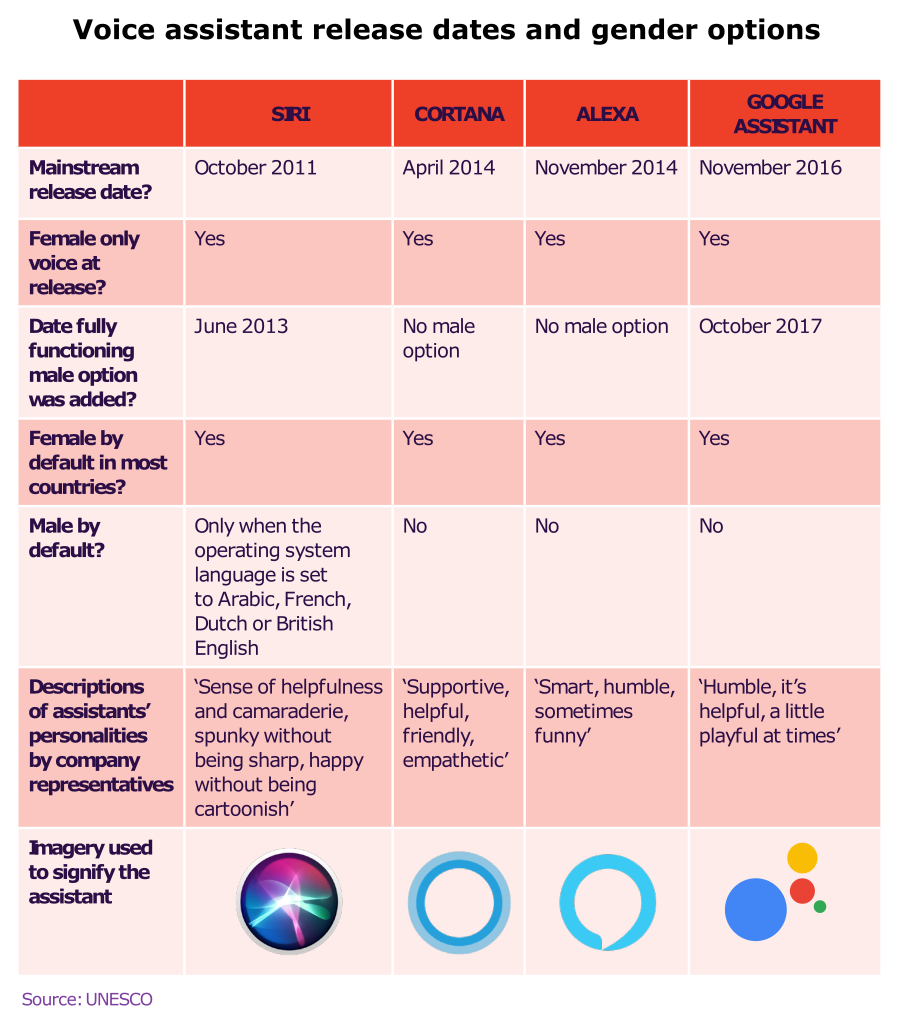
Voice tech is shaking up how leaders run their businesses. By 2024, the voice recognition market might hit $27.16 billion. That's huge! Leaders are always on the lookout for ways to make things run smoother and communicate better. And voice tech is stepping up. It's changing how leaders talk to their teams and connect with customers. It’s not just a passing trend; it's becoming a key tool for today’s leaders. In this article, we’ll look at how voice tech is playing a big role in leadership, its uses in business, and the future trends that could change our workspaces. But we can't ignore the challenges and ethical questions this tech brings. We’ll cover those too. Whether you’re a seasoned executive or just starting out, let’s explore how voice tech is shaping the future of leadership!
Summary: Dieser Artikel beschreibt die Rolle der Sprachtechnologie in der modernen Führung, ihre Geschäftsanwendungen und zukünftige Trends sowie die Herausforderungen und ethischen Überlegungen. Ein FAQ-Bereich rundet das Thema ab, indem er häufig gestellte Fragen zur Sprachtechnologie beantwortet.
The Role of Voice Tech in Modern Leadership
Understanding Voice Technology in Leadership
Voice technology is rapidly becoming an integral part of modern communication, transforming the way leaders connect with their teams and manage tasks. The voice recognition market is projected to reach $27.16 billion by 2025, illustrating the swift adoption of this technology across various sectors. At its core, voice technology leverages natural language processing (NLP) to comprehend spoken language, enhancing both customer service and leadership interactions for smarter and more efficient communication. This technology is essential for seamless communication, particularly within diverse, global teams.

AI-powered voice tools extend beyond personal assistants like Alexa, Siri, or Google Assistant. They encompass a broad spectrum of applications, capable of understanding and responding to human speech with remarkable accuracy. These systems utilize NLP to discern context, tone, and intent, making them invaluable for leadership tasks. For instance, a CEO can employ voice assistants to schedule meetings, receive quick updates, and communicate with employees in multiple languages worldwide, thereby enhancing global leadership capabilities.
Enhancing Leadership Communication with Voice Tech
Effective communication is fundamental to exceptional leadership, and AI voice technology enhances this by facilitating more natural and engaging interactions. This technology expands a leader's reach by enabling hands-free, real-time conversations, which is particularly advantageous in remote work environments where face-to-face interactions are limited. Leaders can utilize voice tools with biometric security to ensure personal communications remain confidential, fostering trust and engagement within remote teams.
Voice Tech in Virtual Meetings and Conferences
Platforms like Zoom and Microsoft Teams have integrated voice technology to streamline virtual meetings. Users can employ voice commands to join meetings, mute participants, and even access real-time transcripts. This not only simplifies meeting management but also helps leaders remain engaged without technical distractions. Furthermore, voice biometrics and AI voice authentication secure remote communications, safeguarding sensitive information.
Personalized Communication with AI Voice Tools
Voice technology also facilitates more personalized communication. Tools such as Otter.ai enable leaders to transcribe and analyze conversations, allowing them to tailor their communication style to each team member. This personalized approach fosters a more inclusive and engaging work environment where everyone feels heard and valued.
Voice Tech in Decision-Making and Efficiency
Voice technology plays a pivotal role in enhancing decision-making and efficiency for leaders. AI voice assistants manage routine tasks, allowing leaders to concentrate on strategic decisions. This is crucial for effectively managing diverse teams. AI voice platforms also facilitate seamless multilingual communication, which is essential for leaders in global business contexts.

Data Access and Analysis with Voice Technology
Leaders can leverage voice-activated tools to swiftly access and analyze large datasets. These tools simplify complex data and present insights in an easily digestible format, aiding leaders in making informed decisions. Voice commands can also generate reports and display data trends, supporting strategic planning and forecasting.
Automating Tasks with Voice Tech
Voice technology aids leaders in automating routine tasks, freeing up time for more critical work. In customer service, AI voice technology reduces wait times by quickly understanding and directing inquiries, enhancing efficiency and responsiveness. An AI voice assistant can instantly route requests to the appropriate department, relieving leaders from routine follow-ups and improving organizational response.
Boosting Productivity with Voice Applications
Incorporating voice technology into daily tasks can significantly boost productivity. Applications like Dragon NaturallySpeaking offer advanced speech-to-text capabilities, enabling leaders to dictate emails, documents, and notes with precision. This accelerates documentation processes and ensures leaders can capture thoughts and ideas instantly, without the need for typing.
In summary, voice technology is revolutionizing how leaders communicate, make decisions, and manage their teams. By embracing these tools, leaders can enhance their effectiveness, drive innovation, and cultivate a more dynamic and responsive organizational culture.
Business Applications of Voice Tech
Enhancing Customer Service with Voice Tech
Voice technology is revolutionizing customer service by enhancing voice communication clarity and quality. A significant player in this transformation is AI speech enhancement. It elevates voices to studio-quality sound, greatly improving the customer experience, particularly in remote service scenarios. Key features such as ultra-low delay and superior noise cancellation are instrumental in this improvement. Companies like Revoize are at the forefront of these advancements.

Speech recognition technology further aids this transformation by automating transcription and call analysis. This capability allows businesses to identify communication issues and ensure adherence to sales scripts, proving invaluable for quality control. In call centers, it reduces data errors and accelerates response times, enabling immediate handling of customer inquiries. Call Center Studio underscores the importance of this technology in efficient customer service.
Voice biometrics add an additional layer of security by utilizing unique voice features for authentication. This approach allows for secure access without the need for traditional passwords, streamlining and securing customer interactions. More businesses are adopting these technologies to enhance efficiency and security, as discussed by AI Multiple.
Streamlining Internal Operations with Voice Tech
Voice technology also plays a crucial role in optimizing internal operations by automating routine tasks. Speech recognition can significantly reduce time spent on reports and protocols by automating transcription, allowing employees to focus on more creative endeavors. This is especially beneficial in sectors like healthcare and logistics, where paperwork is abundant, as noted by MyMeet.

In healthcare, it assists doctors by documenting notes, writing prescriptions, and updating electronic medical records, thereby reducing paperwork and freeing up time for patient care. Moreover, edge processing in voice technology ensures privacy and speed by processing audio on-device rather than in the cloud, guaranteeing secure communication, as explained by Revoize.
Voice technology also facilitates the analysis of meetings and calls, creating searchable knowledge bases from voice data. This capability enhances information retrieval and decision-making, boosting operational efficiency and strategic planning.
Promoting Inclusivity and Diversity through Voice Tech
Voice technology is a powerful tool for promoting inclusivity and diversity by enhancing accessibility and accommodating various communication needs. In educational settings, AI speech enhancement improves audio quality in virtual classrooms, aiding students with hearing challenges by clarifying instructions. It supports global education by providing multilingual support, enabling effective communication among diverse teams, as highlighted by Revoize.
Speech recognition and voice biometrics offer inclusive security solutions by providing alternatives to passwords, catering to diverse needs and preferences. This technology extends to retail, where voice recognition helps retailers understand customer preferences and respond effectively, as discussed by Call Center Studio.
By dismantling language and accessibility barriers, voice technology fosters a more inclusive work environment, empowering diverse employees to contribute effectively. This inclusivity can lead to innovative solutions and a stronger market position.
In summary, voice technology extends beyond enhancing customer service and streamlining operations; it also plays a crucial role in fostering inclusivity and diversity. By integrating voice technology into various business processes, companies can enhance efficiency, accessibility, and customer satisfaction, driving growth and innovation.
Future Trends in Voice Technology
The Evolution of Voice AI Agents in Voice Tech
Voice AI agents have come a long way. They're not just basic assistants anymore; they're turning into smart partners. These agents now understand user habits, context, and even emotions, making interactions feel more personal and human-like. AI Voice Technologies.
One significant leap in voice AI is device continuity. This means you can seamlessly switch your conversation from a smartwatch to a smart speaker, making everything feel more connected.
Moreover, these voice assistants are improving at understanding your location and needs. They can adapt to your surroundings and emotions, offering help that's spot on. With autonomous routines, they can automate tasks based on your usual activities, simplifying life.

Generative AI is infusing new life into voice assistants, making them both chatty and smart. Conversational AI and Voice Assistants. Soon, they’ll integrate with augmented reality for hands-free navigation in immersive spaces. Future of Voice Assistants. They're also getting better at anticipating your needs before you even ask.
Security remains a priority. Features like voice biometrics and multi-factor verification are implemented to keep your data safe. Future of Voice Assistants.
Preparing for the Future of Voice Tech
Businesses are investing heavily in conversational AI, making voice a crucial part of work, communication, and home life. AI Voice Technologies. While AI-generated voices are gaining popularity, many companies still prefer voices that sound human and natural. Authentic human voices are favored for marketing and branding because they set the tone and character. State of the Voice Over Industry.
Voice assistants are poised to become the backbone of smart systems, connecting homes, offices, and public spaces.

Future of Voice Assistants. With emerging technologies like quantum computing and 6G networks, voice interactions will be faster and more powerful. Voice-controlled AV technology is expanding, with smart speakers and voice-enabled conferencing becoming standard in workplaces. Top AV Trends.
As voice becomes the primary mode of interaction with AI, it will lead to more voice-driven interactions across various platforms. Conversational AI and Voice Assistants. This shift suggests a future where voice technology is seamlessly integrated into daily life, bringing both new opportunities and challenges.
Voice Tech Challenges and Ethical Considerations
Voice Tech Integration Challenges
Voice AI technology is advancing, enabling seamless transitions between devices such as smartwatches and smart speakers. This requires integration with systems like Amazon Sidewalk and Apple's Handoff. However, achieving accurate speech recognition remains a significant hurdle. Variations in languages, accents, and environmental noise complicate the deployment of voice tech universally. According to a survey by AIMultiple, 73% of respondents identified accuracy as a major concern.
Voice assistants are evolving to comprehend contextual cues, such as user emotions or background noise, and adjust their responses accordingly. This evolution demands sophisticated AI models and extensive data. Additionally, voice AI is automating routine tasks by learning user habits, necessitating integration with calendars, contacts, and other tools.
Businesses face challenges in scaling voice AI due to concerns about accuracy, user control, and regulatory compliance. These issues influence the integration and deployment strategies. For instance, initiating a query on a smartwatch and having it completed by a smart speaker at home exemplifies device interoperability, yet achieving this seamless interaction involves overcoming technical and legal challenges.
Ethical Implications of Voice Tech
Voice recordings, akin to biometric data, raise significant privacy and security concerns. Users fear unauthorized data collection or potential device hacking. Companies often collect voice data to enhance device functionality and target advertising, which can make users uncomfortable due to the perception of constant surveillance. Transparency and user control over data are crucial. For example, Google Home devices allow users to manage collected data, striving to balance functionality with privacy concerns.

Adhering to biometric data regulations across various jurisdictions is essential to avoid unethical practices and legal repercussions. Moreover, bias in voice recognition systems can result in disparate performance across different demographic groups, leading to inequitable experiences. Addressing these ethical challenges involves balancing technological advancement with societal impact, ensuring voice technology is deployed responsibly and equitably.
Voice Tech FAQ: Enhancing Leadership and Business
How Voice Tech Transforms Leadership Communication
Voice tech is transforming how leaders communicate and connect, offering a seamless, hands-free experience akin to a natural conversation. This real-time interaction is crucial for effective decision-making and smooth discussions. Leaders can leverage AI-powered voice assistants to quickly access information and data, enhancing their ability to respond promptly and communicate clearly. These systems are adept at handling various accents and speech styles, ensuring comprehension across diverse teams. Imagine a CEO using a voice assistant during a meeting to swiftly retrieve data and answer questions without interruption. Utilizing voice tech in this manner not only streamlines operations but also enriches the quality of conversations.

Key Benefits of Voice AI in Business Operations
Voice AI is revolutionizing business operations by enhancing efficiency and customer satisfaction. A significant advantage is the provision of 24/7 automated support, which reduces labor costs and increases efficiency by managing routine inquiries and tasks. Advanced voice AI integrates speech recognition, natural language processing, and machine learning to navigate complex conversations and industry-specific jargon, making it highly versatile for businesses.
Moreover, voice AI enhances the customer experience by delivering quick and accurate responses, minimizing wait times, and boosting customer satisfaction. Its compatibility with existing systems simplifies processes such as scheduling, lead qualification, and information gathering. For instance, a customer service center might deploy a Neural Voice AI assistant to address FAQs and arrange appointments, allowing human agents to focus on more intricate issues.
Voice AI's Role in Workplace Inclusivity and Diversity
Voice AI plays a pivotal role in promoting inclusivity and diversity in the workplace. It can recognize and understand diverse accents and speech styles, facilitating communication among a varied team. This capability is invaluable for global teams, as AI voice assistants can be customized to support multiple languages and dialects.
Additionally, voice AI aids employees with disabilities by enabling hands-free, natural language interaction, thereby enhancing workplace accessibility. It empowers individuals with disabilities to engage with digital tools without obstacles, fostering a more inclusive environment. For example, a multinational company might employ a multilingual voice AI assistant to support employees who speak different languages and possess varied accents, ensuring equitable communication for all.

Overall, voice AI is a potent tool for advancing inclusivity and diversity, offering solutions that cater to diverse needs and dismantling barriers that might otherwise hinder workplace participation. Its adaptability to different languages and cultures makes it an invaluable asset for companies striving for a more inclusive and diverse environment.